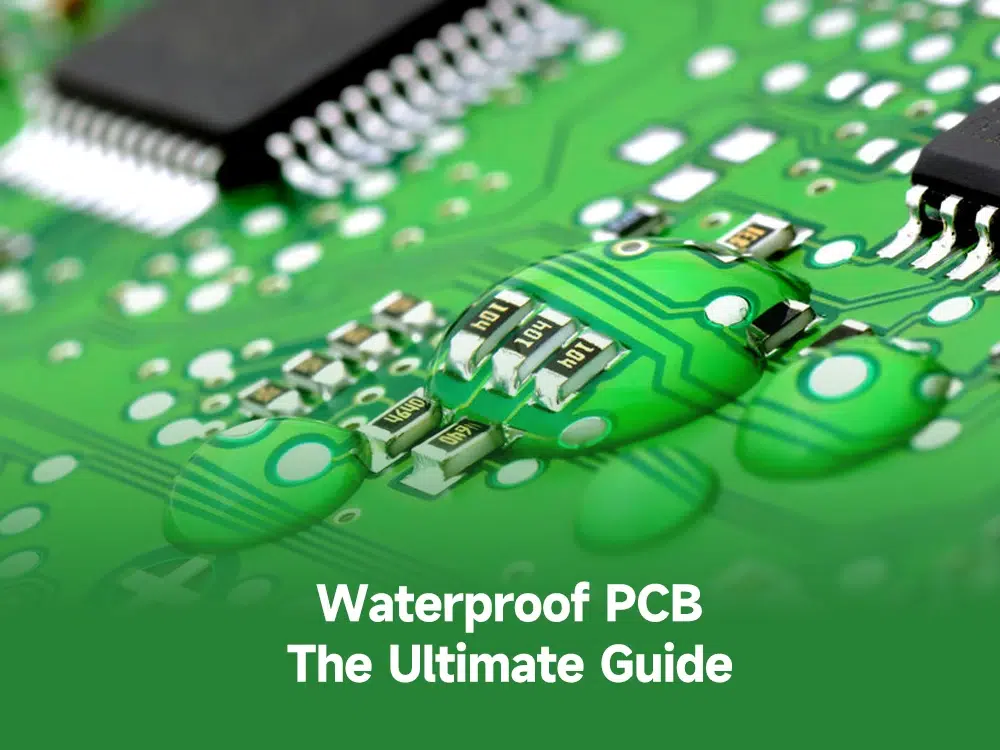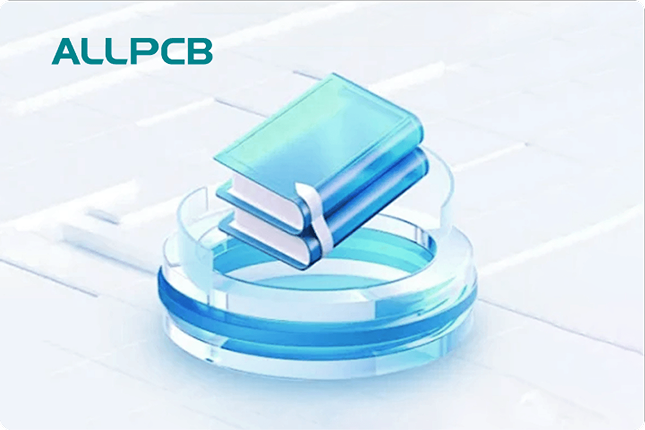In water treatment applications, where exposure to moisture, chemicals, and harsh conditions is inevitable, using waterproof PCBs is critical for ensuring the longevity and reliability of electronic systems. These specialized circuit boards are designed to resist water damage, prevent corrosion, and maintain performance in challenging environments. This blog dives deep into the importance of waterproof PCB design for water treatment, exploring techniques like PCB coating for water resistance, conformal coating for PCBs in wet conditions, effective PCB sealing methods for water treatment, and strategies for PCB corrosion protection in water-heavy settings.
Whether you're an engineer designing control systems for water purification plants or maintaining equipment in industrial wastewater facilities, understanding how to protect PCBs from environmental hazards is essential. Let’s explore the best practices, materials, and methods to achieve durable and reliable waterproof PCBs tailored for water treatment applications.
Why Waterproof PCBs Matter in Water Treatment Applications
Water treatment facilities, including desalination plants, wastewater processing units, and drinking water purification systems, rely heavily on electronic systems for monitoring, control, and automation. Sensors, controllers, and communication devices must operate flawlessly despite constant exposure to high humidity, water splashes, and even corrosive chemicals like chlorine or saline solutions. Without proper protection, standard PCBs can suffer from short circuits, component failure, and corrosion, leading to costly downtime and repairs.
Waterproof PCBs address these challenges by incorporating protective measures during design and manufacturing. These boards are built to withstand moisture ingress, resist chemical degradation, and maintain electrical performance under adverse conditions. For instance, a well-protected PCB in a water treatment sensor can operate reliably in humidity levels exceeding 90% or even during accidental submersion, ensuring uninterrupted system functionality.

Key Challenges for PCBs in Water Treatment Environments
Before diving into solutions, it’s important to understand the specific threats PCBs face in water treatment settings:
- Moisture and Humidity: Constant exposure to water vapor or direct splashes can lead to short circuits or signal degradation.
- Corrosion: Chemicals used in water treatment, such as disinfectants or salts in desalination processes, can corrode metal traces and components on a PCB.
- Temperature Fluctuations: Water treatment systems often experience varying temperatures, which can cause condensation and further moisture issues.
- Mechanical Stress: Vibrations from pumps or machinery can weaken unprotected boards over time.
Addressing these challenges requires a multi-layered approach, combining robust design, protective coatings, and proper sealing techniques. Let’s break down the most effective strategies for waterproof PCB design in water treatment applications.
Waterproof PCB Design for Water Treatment: Best Practices
Creating a waterproof PCB starts at the design stage. Thoughtful planning can significantly enhance a board’s ability to resist water and corrosion. Here are key considerations for designing PCBs tailored to water treatment environments:
1. Material Selection
The choice of substrate and components plays a crucial role in water resistance. Opt for materials like FR-4 with enhanced moisture resistance or specialized laminates designed for harsh environments. Additionally, select components with high ingress protection (IP) ratings, such as IP67 or IP68, which indicate resistance to dust and water immersion up to specific depths (e.g., 1 meter for 30 minutes for IP67).
2. Layout Optimization
Design the PCB layout to minimize exposure of critical areas to moisture. For instance, place sensitive components away from board edges where water might seep in. Use wider trace spacing to reduce the risk of short circuits caused by water bridging between conductive paths. A typical trace spacing of 0.5mm or more can help in high-humidity environments.
3. Ground Planes for Signal Integrity
Incorporate solid ground planes to stabilize signal integrity, as moisture can interfere with high-frequency signals. A well-designed ground plane can reduce impedance mismatches, maintaining signal speeds even in damp conditions. For example, ensuring impedance values remain within ±10% of the target (e.g., 50 ohms for RF applications) can prevent performance drops.

PCB Coating for Water Resistance: A Protective Shield
One of the most effective ways to protect PCBs from water damage is by applying specialized coatings. These coatings act as a barrier, preventing moisture and chemicals from reaching the board’s surface. Here are the main types of coatings used for waterproofing PCBs in water treatment applications:
1. Conformal Coating for PCBs in Water Environments
Conformal coating is a thin polymeric film applied to the PCB surface to protect against moisture, dust, and chemicals. Common materials include acrylic, silicone, and urethane, each offering different levels of protection. For water treatment systems, silicone-based conformal coatings are often preferred due to their excellent moisture resistance and flexibility, which helps withstand temperature fluctuations.
Conformal coatings can protect against humidity levels up to 95% and provide a dielectric strength of around 50-100 volts per mil (0.001 inch), ensuring electrical insulation even in wet conditions. Application methods like brushing, spraying, or dipping allow for uniform coverage, though care must be taken to avoid coating connectors or test points that need to remain accessible.
2. Nano-Coatings for Enhanced Protection
Nano-coatings are ultra-thin layers (often just a few nanometers thick) that provide water-repelling properties without adding bulk to the PCB. These coatings are ideal for compact devices used in water treatment, where space is limited. They can repel water effectively while maintaining breathability to prevent trapped moisture, offering protection against immersion up to 1 meter for short durations.

PCB Sealing Methods for Water Treatment: Locking Out Moisture
Beyond coatings, sealing methods provide an additional layer of defense by physically enclosing the PCB or its enclosure to block water ingress. These techniques are particularly valuable in water treatment setups where equipment may face direct water exposure.
1. Potting and Encapsulation
Potting involves filling the PCB enclosure with a resin or epoxy that hardens to form a solid, waterproof barrier. This method offers superior protection against water and chemicals, making it ideal for harsh water treatment environments. Encapsulation, a similar process, fully encases the PCB in a protective material, often used for smaller assemblies.
Potting compounds typically have a hardness rating of Shore D 80-90, ensuring durability, and can withstand continuous exposure to water at depths of up to 3 meters, depending on the material. However, potting makes repairs difficult, so it’s best suited for designs that prioritize long-term reliability over serviceability.
2. Gasket and Enclosure Sealing
Using sealed enclosures with gaskets is a practical way to protect PCBs without altering the board itself. Enclosures with IP ratings of 65 or higher can prevent water and dust ingress, while rubber or silicone gaskets ensure a tight seal around openings. For water treatment systems, enclosures made of corrosion-resistant materials like stainless steel or high-grade plastics are recommended to handle chemical exposure.
PCB Corrosion Protection in Water Environments
Corrosion is a major threat to PCBs in water treatment applications, especially when exposed to saline solutions or acidic chemicals. Protecting against corrosion requires a combination of material choices, coatings, and maintenance practices.
1. Use of Corrosion-Resistant Materials
Select PCB finishes that resist corrosion, such as immersion gold or tin over nickel plating. These finishes provide a protective layer over copper traces, preventing oxidation even in salty or acidic conditions. Immersion gold, for instance, offers a corrosion resistance lifespan of over 10 years in humid environments with salt spray exposure.
2. Regular Maintenance and Inspection
Even with protective measures, periodic inspection of PCBs in water treatment systems is crucial. Look for signs of coating wear, moisture buildup, or corrosion on exposed areas. Cleaning with isopropyl alcohol and reapplying conformal coatings every 2-3 years can extend the board’s life significantly.
3. Environmental Controls
Where possible, reduce the environmental stress on PCBs by controlling humidity and temperature in equipment rooms. Dehumidifiers or climate-controlled enclosures can keep humidity below 60%, reducing the risk of condensation and subsequent corrosion.
Testing and Standards for Waterproof PCBs in Water Treatment
To ensure reliability, waterproof PCBs for water treatment applications must undergo rigorous testing. Common standards include:
- IP Testing: Measures ingress protection against water and dust. An IP67 rating, for example, confirms the PCB can withstand immersion in 1 meter of water for 30 minutes.
- Salt Spray Testing: Evaluates corrosion resistance by exposing the PCB to a saline mist for extended periods (e.g., 96 hours) to simulate harsh water treatment conditions.
- Humidity Testing: Assesses performance in high-humidity environments, typically at 85% relative humidity and 85°C for 1000 hours.
Manufacturers should adhere to these standards to guarantee that their PCBs meet the demands of water treatment applications. Testing data, such as a PCB surviving 1000 hours of humidity testing without signal loss, provides confidence in the board’s durability.
Real-World Applications of Waterproof PCBs in Water Treatment
Waterproof PCBs are integral to various water treatment processes. Here are a few examples:
- Water Quality Sensors: Devices monitoring pH, turbidity, or chlorine levels rely on waterproof PCBs to function in wet conditions without signal interference.
- Pump Controllers: PCBs controlling water pumps must resist moisture from splashes or leaks, ensuring consistent operation.
- Desalination Systems: In saltwater environments, corrosion protection is vital for PCBs managing reverse osmosis or other desalination processes.
By implementing the design and protection strategies discussed, these systems can achieve operational lifespans of 5-10 years or more, even in the harshest conditions.
Conclusion: Building Reliable Waterproof PCBs for Water Treatment
Waterproof PCBs are essential for ensuring the longevity and reliability of electronic systems in water treatment applications. By focusing on waterproof PCB design for water treatment, applying PCB coating for water resistance, using conformal coating for PCBs in water environments, employing effective PCB sealing methods for water treatment, and prioritizing PCB corrosion protection in water-heavy settings, engineers can create robust solutions that withstand the toughest conditions.
From material selection and layout optimization to potting, encapsulation, and regular maintenance, each step plays a vital role in safeguarding PCBs against moisture and corrosion. As water treatment systems continue to advance with automation and IoT integration, the demand for durable, waterproof electronics will only grow. With the right approach, you can ensure your PCBs deliver consistent performance, minimizing downtime and maximizing efficiency in critical water treatment operations.
 ALLPCB
ALLPCB







